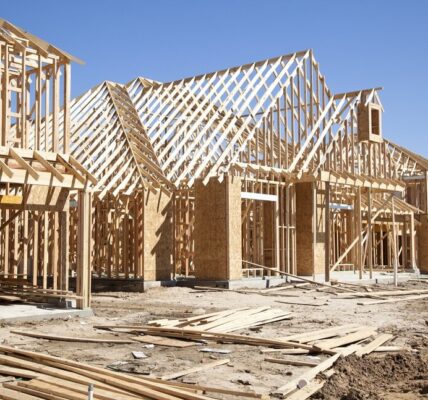What to Know About Rent-to-Own
Why Choose a Rent-to-Own?
A rent-to-own is appealing for some because it provides financial flexibility. Obtaining a home loan, putting in an offer, coordinating a home inspection, and closing is the traditional way to buy a house. But for those with less than perfect credit, a new job without proof of income, and sometimes those who are self-employed, leasing to ownership allows the purchaser to lock in the house and buy time to qualify for the mortgage — even better if the homeowner is willing to agree to a contract for deed and you can avoid formality altogether!
For the seller, the why is easy:
- Attract a higher-caliber tenant.
- Receive a larger amount of money upfront.
- See larger profit margins should the renter choose not to buy.
The Process of Renting to Ownership
So what does this whole transaction look like? Here’s an overview of the process:
Non-refundable option payment. Essentially, the renter provides the seller with a sum of money to reserve the right or option to buy the property during or at the end of the lease. The number can fluctuate, but it typically falls anywhere between 1% and 5% of the purchase price. This also keeps the homeowners from putting the house on the market and attracting more buyers.
The lease. As with any lease, the variables will fluctuate. The things you want to focus on are duration (because that dictates how much time you’ll have to accrue a down payment and increase your credit score to apply for a home loan) and the terms lease option and lease purchase.
Here’s why. The lease option allows you to walk away at the end of your lease. If you decide that the property is not the right fit and need to move on, you can cut your losses and turn the other way. However, if your lease says lease purchase, there’s no option. At the end of your lease, you are legally obligated to buy the property.
Purchase price. The biggest question of all is, what is the purchase price? Most of the time, this is determined when the contract is signed, but sometimes it’s at the end of the lease.
There are pros and cons to both approaches.
- Negotiating at the beginning of your lease can help you lock in a great rate if the market is continuing to increase. However, there’s a potential that the property’s value will go down and you’ll end up overpaying for the home.
- Determining a purchase price at the end of your lease will help you settle on the most accurate fair market value for the property. However, the former option’s pro is this one’s con. Should the value of the home increase while you’re leasing it, you’ll wind up paying more than if the price was determined at the start of your lease.
Applying rent to the principle. How much of your rent is going toward the purchase price each month? Take a look at this example from Investopedia:
“If you pay $1,200 in rent each month for three years, and 25% of that is credited toward the purchase, you’ll earn a $10,800 rent credit ($1,200 x 0.25 = $300; $300 x 36 months = $10,800).”
The Benefits of Renting or Leasing to Own
Here’s what can work well for those who choose to rent-to-own.
There’s more time to build a down payment. Sometimes, the only thing between you and homeownership is the lump sum required by lenders for a down payment. Leasing the home you want to buy before you buy it gives you more time to save the appropriate amount.
Avoid buyer competition later. A lease-to-own cuts out all the competition. By navigating this path to homeownership, you’re able to avoid a bidding war and enjoy a more peaceful transition into your new home.
You have more time to increase your credit score. One of the biggest reasons a homebuyer will choose the rent-to-own route is simply because they have less than perfect credit and can’t obtain an affordable mortgage. This alternative to traditional home buying allows you to not only secure the home you want to buy, but it also gives you more time to build credit.
The Pitfalls of Rent-to-Own
As you may have guessed, a rent-to-own isn’t always the best decision. While some will see benefits to this method, there are some components that buyers should know.
It can be more expensive and harder to save. You can expect to pay more both upfront and each month with a rent-to-own than you would for a standard rental property. Though some of the increased rates go toward the cost of the home at the end of your lease, there’s a risk of losing it all should you choose to walk away instead of purchasing the property. In the same way, spending more money each month can make it more difficult to save for a down payment and build your credit score.
A less expensive rental allows more flexibility until you’re able to pay off debt, provide proof of income, increase your credit, and qualify for a home loan.
Learn how to put your best financial foot forward: What to Know About Your Finances Before Buying a Home.
The market could change. Most of the time, the purchase price for the property is determined upon signing the lease. While that can provide an incredible opportunity to lock in a great rate at a time when the market is rapidly rising, it can do the opposite. To avoid this pitfall, it’s best to get an appraisal done, look at the city’s plans for development, look at trends in the neighborhood, and do your best to predict what the home will be worth in two, three, or four years from now.
You’re tied to the owner’s finances. Let’s think about the worst-case scenario for a minute. What if you sign a lease-to-own, live in the property for a year, maintain it, and plan to buy it in six months, but the owners fail to make their mortgage payments? The lender could foreclose on the home. Dave Ramsey reminds us, “That house goes to the bank — not to you.”
Now you’re not just a tenant without a home, you’re a tenant without a home and facing a hefty financial loss. He adds:
“Or, if the seller just up and changes their mind after they’ve signed a rent-to-own contract, it would take expensive legal action to enforce the contract in that scenario. That’s a cost you may not be able (or willing) to pay.”
Contract for deeds (good for buyers, bad for sellers). While there isn’t an overwhelming number of concerns for sellers to offer a rent-to-own, Senior Loan Officer at KS State Bank, Jim Wallace warns sellers of Contract for Deeds.
Let’s say that you’re the homeowner and you agree to a Contract for Deed. You hang onto the title but hand over the property. Instead of walking away with the financial value of your house in full, you’re now strung along by monthly payments.
While that might not seem like a big problem in and of itself, it can be. The loan still falls on your credit report which can make it difficult to get a new one when you’re looking to buy your next house. More importantly, the buyer doesn’t follow the formal application process they would when applying for a mortgage. If the renter were to default on payments or fail to follow city code and ordinance, the consequences for their actions fall on you.





